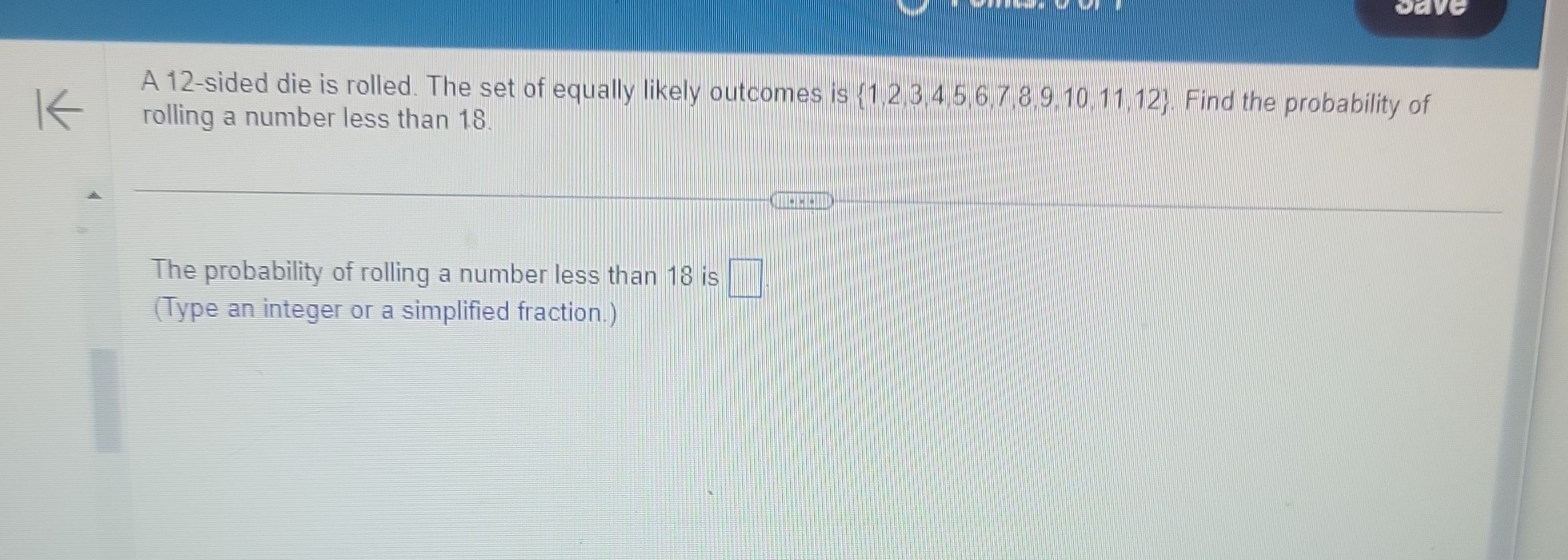AI tutor
Welcome to Bytelearn!
Let’s check out your problem:

A -sided die is rolled. The set of equally likely outcomes is . Find the probability of rolling a number less than .The probability of rolling a number less than is (Type an integer or a simplified fraction.)
Full solution
Q. A -sided die is rolled. The set of equally likely outcomes is . Find the probability of rolling a number less than .The probability of rolling a number less than is (Type an integer or a simplified fraction.)
- Identify total possible outcomes: First, we need to identify the total number of possible outcomes when rolling a -sided die. Since the die has sides, there are possible outcomes.
- Determine favorable outcomes: Next, we determine the number of favorable outcomes for the event "rolling a number less than ."Since all numbers on a -sided die are less than , all outcomes are favorable.
- Calculate probability: Now, we calculate the probability of the event by dividing the number of favorable outcomes by the total number of possible outcomes.Probability = Number of favorable outcomes / Total number of possible outcomesProbability =
- Simplify fraction: Upon simplifying the fraction, we find that the probability is equal to , which can also be written as .Probability = or
More problems from Probability of simple events
QuestionGet tutor help
QuestionGet tutor help
QuestionGet tutor help
QuestionGet tutor help
QuestionGet tutor help
QuestionGet tutor help
QuestionGet tutor help
QuestionGet tutor help
QuestionGet tutor help
